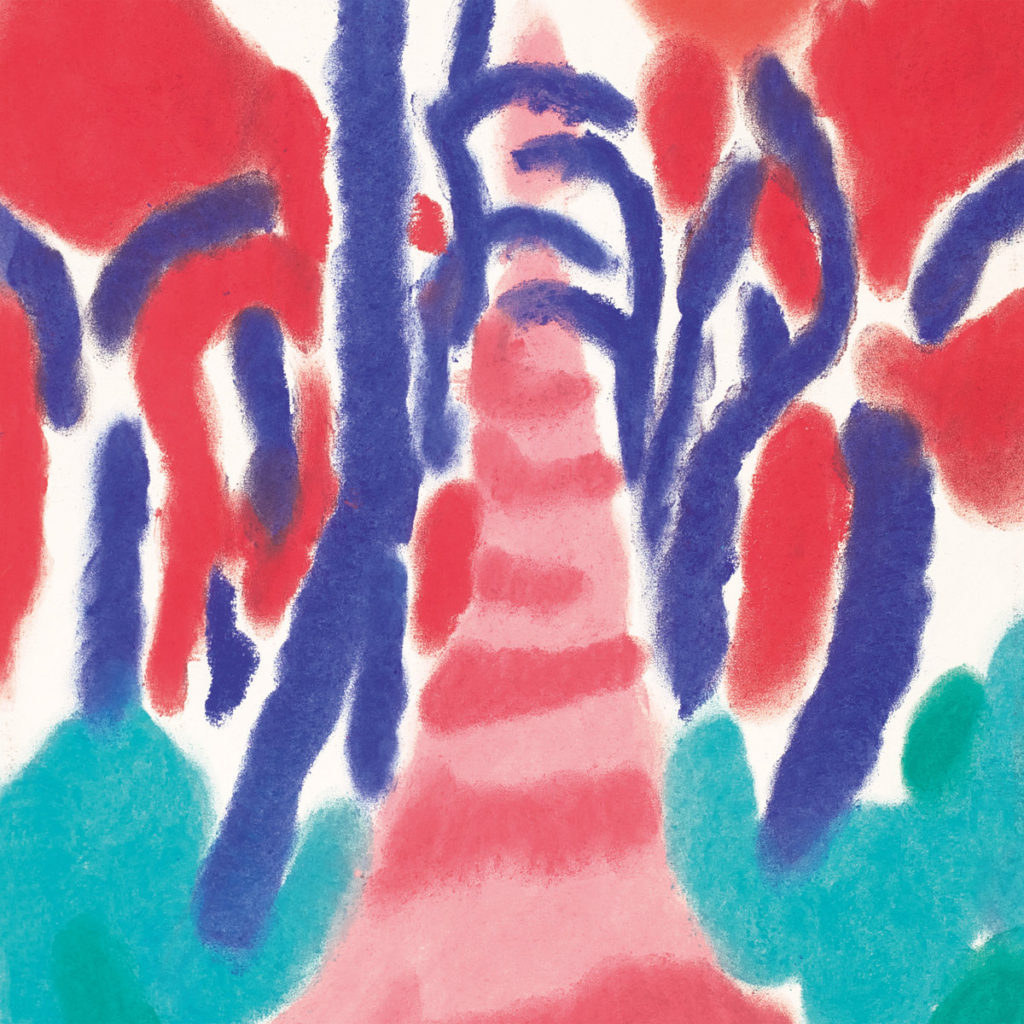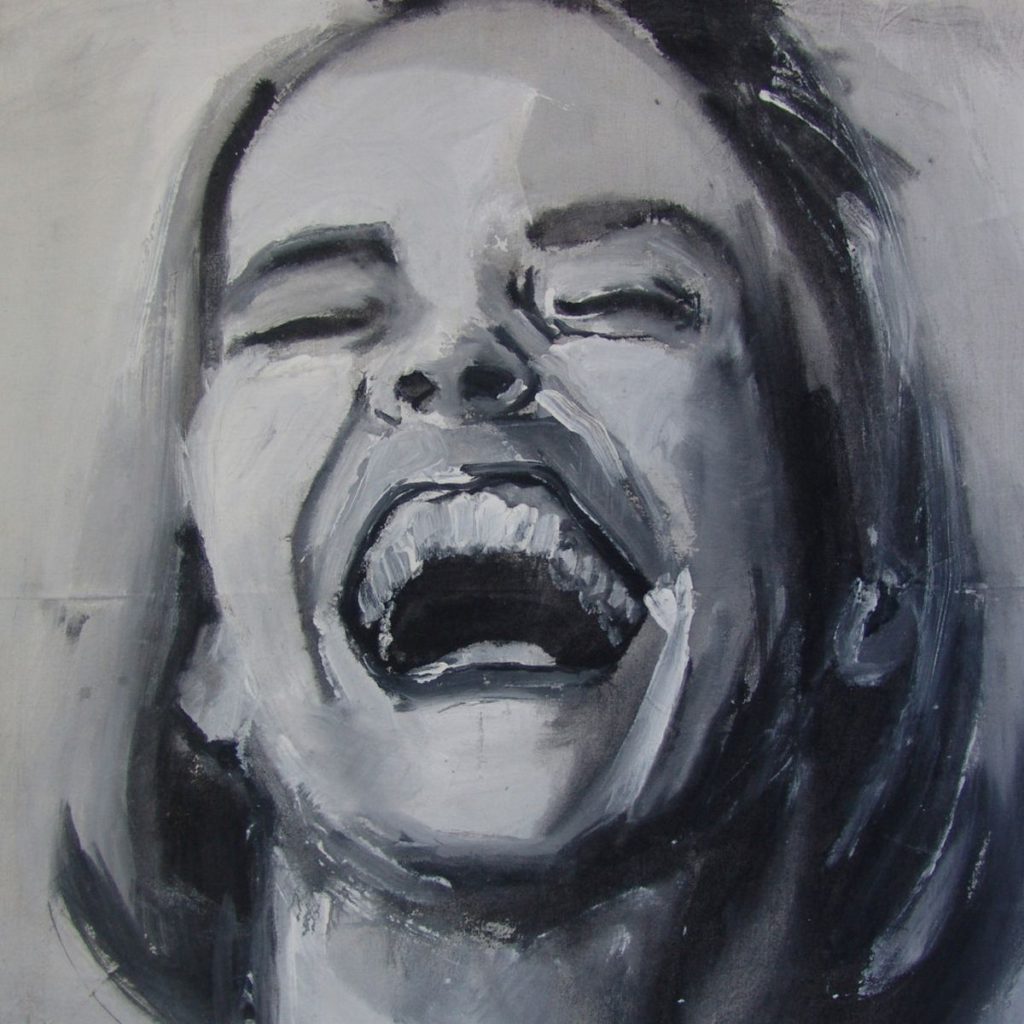Toshiya Kawasaki (Screenshot: Boiler Room)
Die deutsche Version des Interviews findet ihr hier.
He stumbled into the fashion world through James Dean and ran one of the most important house labels in the world — Toshiya Kawasaki is the head of Mule Musiq and one of the first promoters to bring the Colognes Sound of Kompakt to Japan. Over the years Kawasaki has founded several sublabels, among them Studio Mule releasing experimental music between folk and fusion. In an interview with GROOVE editor-in-chief Alexis Waltz Toshiya Kawasaki explains why he left fashion behind, why he took a photo of Kompakt’s Michael Mayer by chance, and why he no longer releases DJ Sprinkles’ music.
With Mule Musiq and its sub-labels you released minimal house and techno but also EPs by Lydia Lunch. Now you run Studio Mule leaving dance music behind, mostly reissuing music from Japan. How did you get to this point?
Toshiya Kawasaki: I never thought much about the music, I just released what I love. It has always changed over the years. With Studio Mule, it’s different. I dig old records out of my collection and listen to them again after a long time. If I like what I hear, I take care of the licensing to re-release the record. What both approaches have in common is that I’ve never specialized in one genre. From hip hop to techno to jazz, I’ve done everything so far.
How do you discover the music you reissue?
It’s music I listened to as a teenager – old Japanese jazz, which is gaining popularity again in Japan but also internationally. Twenty years ago, it was different. You could buy these records for 500 Yen, a few Euros. Today, some of them are worth up to 100 Euros! Because I bought a lot back then, I can plan for the future of Studio Mule. To re-release those records that fit in the times again.

How did you discover this music back then, when you were young?
I listened to the radio a lot, to stations like The Jet Stream, where they played fusion jazz which gave me a feeling for the night. Later I discovered jazzy rock. Club music, on the other hand, didn’t interest me much. Still, I liked going to clubs — but not for the music, but because of the girls. And because of the fashion, which I found interesting!
What got you interested in fashion?
When I was in fifth grade, I saw a Levi’s 501 ad — James Dean smiling from a poster in blue jeans. I immediately knew that was it!
For a while I was into the elegant Parisian style. Then I realized: it’s nice for a quick look, but not elaborated in detail!
Why?
Well, look at James Dean! Also, the advertising was done quite simply. Its non-normativity appealed to me because you couldn’t tell why it was advertising. That was an aha moment. Up until that point, I’d been running around in Nike jogging gear, then I got into fashion. Soon I had friends who were in those scenes.
What have you been into before you got into fashion?
Before that, I was a different person after all. I come from a family of teachers, my father was doubly disciplined because of being a tennis player as well. He demanded the same discipline from me. Before going to bed, I had to exercise my abdominal muscles. My mother also checked late at night to see if I was studying for school. I went to a private high school — with a lot of rich kids. Some of them were my friends, I went out with them or played basketball. That was my life for a long time.

You’re from Osaka, right?
I grew up southwest of Osaka in Tokushima Prefecture. It took three hours to get to the city by car.
How did you spend your free time being a teenager?
In the evening I went clubbing and during the day I flipped through fashion magazines like Vogue. With their glossy covers, they were eye-catchers back then! I liked the visual aspect. That’s why today I attach great importance to the covers of my new releases.
How do you remember the nightlife of your town?
There were only three clubs. Disco was played in one of them, in a larger one they played whatever was trendy at the time. And in the smallest club I heard music from the underground.

Why did you move to Osaka later?
To study something business related, but I only went to the university three times. At that time I was already working in fashion stores. I had to work to afford the clothes I wanted.
What kind of fashion were you interested in?
At first it was fashion from the USA — casual, vintage, the Levi’s way. Later, I became interested in French fashion. For a while I was into the elegant Parisian style. Then I realized: it’s nice for a quick look, but not elaborated in detail! When I came across Italian fashion, I discovered true craftsmanship. That’s what I went with then. It must be simple, but always chic!
I absorbed a lot of it and filtered a new feeling out of it.
I read that you worked for European fashion labels. How did you get into that?
It was a small company that was headquartered in Paris but opened a store in Tokyo’s Harajuku fashion district. They sold vintage workers’ jackets and white shirts with embroidery, vintage Burberry coats or bags from Hermès. In the beginning, it didn’t work at all. I was earning less than 100 euros and didn’t know how I was going to make ends meet. Then editors from fashion magazines got aware of the store. Suddenly everyone wanted to shop there. New stores opened, and in one of them they wanted to sell records too. The owners asked me: “You know a lot about music, don’t you want to be our buyer for CDs and records?” At first I was skeptical. After all, I wanted to sell fashion. Besides, CDs were thrown at you everywhere anyway. But through a DJ friend, I got to know people in music distribution. All of a sudden I had access to house and hip hop and got stuff from artists like Ryūichi Sakamoto. That was a different world.
In the 1990s, techno and house also arrived in Japan. How did you experience this time?
In Tokyo, everything happened at the same time; there was no clear direction like in Detroit or New York, for example. Nevertheless, tendencies developed. Clubs like Yellow or Blue played house and acid jazz. I found both fascinating, walked into the record stores the next day and listened to the records. I also started buying music magazines because I could check the charts of my favourite DJs. And: Some people sold cassettes on the street with radio broadcasts from London on them.

Which radio shows did they record?
Gilles Peterson’s and Tony Humphries’ shows. I bought these cassettes for the equivalent of ten euros. After all, I needed to know what would be the next hot thing. That, too, contributed to the mishmash of styles in Tokyo, but in a good way! I absorbed a lot of it and filtered a new feeling out of it.
One that you trained while purchasing for the lifestyle boutique, I assume.
Yes, I was responsible for fashion and music. The store was doing well. They even opened a subsidiary in Paris. For the opening, the owners wanted to give all visitors a welcome gift. They asked me to take care of it and I suggested a CD as the boutique’s soundtrack. Something you can listen to in the background, for about an hour. I asked my musician friends to contribute tracks. As a result, I put together my first compilation — for the fashion boutique!
I heard House, not the British or American one, but with an own touch — a true aha moment!
What happened after that?
The CD was well received. Other stores noticed that, too. They wanted my expertise. So I secretly worked for them as a buyer until a lifestyle store from Kyoto approached me. They wanted me to buy cutting-edge music for them, on CD only, not vinyl. I did that for two years. During that time, I had so much work that sometimes I barely got to sleep. After I quit, I started working as a freelance buyer. In Kyoto, however, it was difficult to get people interested in my kind of music. Suddenly I found myself without a job. That wasn’t easy, after all, I always earned well in the stores. I could buy records for several thousand euros a month and had no worries. Through a deal with a music company, for which I wrote descriptions of releases, I got hold of a special CD. It was a mix by Michael Mayer from Kompakt. I heard house on it, not British or American house, but with an own touch — a real aha moment! You have to imagine: In Japan, nobody knew this sound. Having hosted parties before, I came up with the idea of inviting Michael Mayer.
When was that?
In 2000, almost overnight, I became the booker for all the artists of Kompakt. I invited them and we toured Japan. On that tour, young artists kept coming up to me and slipping me their demo tapes — really good stuff! I was thinking about starting a label. But at that time CDs were selling worse and worse. Many Japanese labels went bankrupt. Still, I wanted to do something with music, but not only for the Japanese market. So I asked Kompakt if they could take over the distribution for my music.
Music became more important than fashion.
I’ll tell you a story about that: When I was 21, I flew to Cologne for a fashion fair. At the entrance of this fair, a pale, thin but well-dressed guy was playing. I can remember him clearly because the music he played was new to me. I also took his picture. Later, when I met Michael Mayer, I told him this story. He asked if he could see the photo — it was actually him! Michael already had an interest in fashion at that time. He did not want to be just a DJ, he also dressed smartly. These two things were never mutually exclusive for me either. Nevertheless, I’ve had enough of the fashion industry in the early 2000s. Besides, I was often asked to be a music buyer anyway.
If Mule were a fashion label, what would it be like?
I wish it matched the aesthetic of Martin Margiela, who founded the Parisian fashion label Maison Margiela.
I run my music label like a fashion label, unlike someone who only comes from music.
DJ and producer Kuniyuki Takahashi is an important person for you and Mule Musiq. How did you get to know him?
Over 20 years ago he did a jazzy remix of Ananda Project’s „Cascades of Colour”. Actually, it was only meant for his girlfriend, but for some reason the track made its rounds, until it ended up with me. For me, his production had a different level than the Japanese music I had heard until then. So I invited Kuniyuki to the opening of my store in Kyoto. As a result, I promised him that I would eventually have a label and release his music. Kuniyuki was already a sought-after musician at that time. A big label from Japan offered him a lot of money. He still turned it down because he values relationships with people — that’s how we came together.
You’ve run several labels. First there was Mule Musiq and Mule Electronic, later Endless Flight and I’m Starting To Feel Ok and now Studio Mule. Why so many?
I can’t focus on one thing, get bored easily and want to map variety all the time. Mule Musiq was house, but my interest was much broader. So I started other labels — just like in fashion: you design a main line, but second labels exist alongside. That allowed me to release more music in a shorter period of time. Sometimes records that I like won’t sell that well. My taste doesn’t always coincide with the mainstream, it rather represents a wide range. That is important to me.

The design, the artwork and the artists you work with, how does that go together?
I run my music label like a fashion label, unlike someone who only comes from music. The whole thing has to fit together. When I started Mule back then, I was looking for designers in Tokyo. I didn’t find anyone whose approach appealed to me. Then I got hold of a record by Playhouse, with an unorthodox cover by Stefan Marx.
Which record was that?
We Are Monster by Isolée. Through a friend I was able to get in touch with Stefan. Since then he has done many covers for Mule Musiq.
My last question: How did you meet Terre Thaemlitz aka DJ Sprinkles?
I was a fan of her label Comatonse Recordings. So I went to one of her parties and told her “I’m doing a label as well, here are some CDs, give them a listen.” She liked the music, but didn’t have the capacity to do anything new. That’s why we made a compilation of tracks which were already released. At that time, the minimal phase was heading towards its peak. Terre, on the other hand, was producing melodic, melancholic music. Still, we wanted to give it a try. After all, it was clear that the pendulum would swing back and there would be a deep house revival. A few months later we released Midtown 120 Blues — Resident Advisor voted it album of the year. We also did singles, a remix compilation and a Mix on a CD. Everything sold well. At some point the issue of money came up, there were problems. Today we no longer have a relationship. Nevertheless, I appreciate her as an artist.





